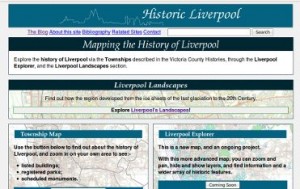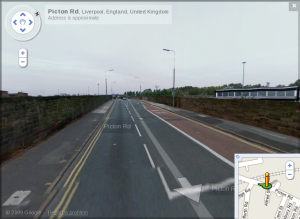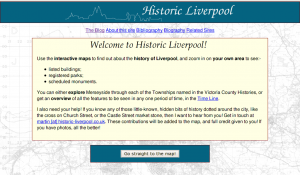Site Update: New features
Having spent a lot of time working on Historic Liverpool, it’s been a while since I last blogged. There haven’t been a great many news stories to write about, but it’s time for an update on progress on the site.

Historic Liverpool
There are two new sections on Historic Liverpool: the Liverpool Explorer, and Liverpool Landscapes (I hope this is confusing enough!).
Liverpool Explorer is an ongoing project – a map which will display all the features that you can get information on throughout the Historic Liverpool website. It’s quite sparse at the moment, with layers for Listed Buildings, Parks and Gardens etc (the same layers visible through the Townships page), and in addition two dots on the new ‘Hidden Gems’ layer. The Hidden Gems are those things you can see in Liverpool today, which don’t (at least yet) readily fit into any other map layers. At present these only include the Church Street Cross and Williamson’s Tunnels. In time these may move to other layers, and other features will be added to Hidden Gems. Either way, this is a bit of a novelty layer, and I hope it provides some idle browsing if nothing else!
Keep an eye on Liverpool Explorer, which will collect all the features available through the rest of the site.
Liverpool Landscapes is an effort to get back to my site’s original aims: to map the archaeological landscape(s) of Liverpool and Merseyside. Have a look at What Is Landscape Archaeology? for an explanation. Each Landscape in this section will address a cross-section of Liverpool’s archaeology from a landscape perspective: how do all the sites in the theme interconnect? Initially this will include period-based landscapes (Natural, Prehistoric, Medieval, Civil War) but will grow to include a number of others. Perhaps some will seem arbitrary to you: where do religious or sporting landscapes begin and end? You may have ideas for some that you think are more important than the ones I’ve included. Please get in touch, or comment below! These are as yet unfinished; new things will be added to them and the pages will be updated over time.
Whatever your thoughts on the site, get them down in the comments section and I will do my best to respond.





